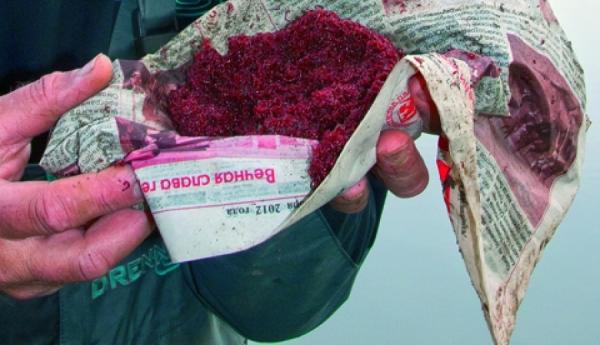Alex Bones Hits Back At Tom Scholey’s ‘the Pursuit Of Perfection’!

Without wishing to get enthralled in a tit-for-tat battle, Tom Scholey’s blog reply to my editorial in February’s edition of Match Fishing entitled ‘The Pursuit Of Perfection’ needs addressing.
In brief my editorial was about anglers putting methods and species on a pedestal and, more to the point, anglers suggesting that certain tactics required more skill than others to execute.
Tom disagreed with my comments – he’s entitled to his opinion no less – but I couldn’t let it lie without a suitable retort.
In particular he strikes out at Method feeder fishing and, by his own admission, it’s something he “could be a lot better at”.
He suggests that when on fish he, once again by his own admission suggesting he is ‘average’ at this tactic, could beat even the best. I don't deny that could be the case, but it rings true for all and any discipline further proving my original point. I have seen some woeful anglers beat England internationals from the next peg in silver fish only events all because they were drawn on more fish. That is part and parcel of the sport.
As Tom suggests manufacturers have carefully designed Method feeders and moulds to play into anglers’ hands. As he suggests making it easier for the consumer to become more proficient by a shelf-ready solution. Further on in his piece he comments that Method feeder baits are simple; a 50/50 mix of pellets and groundbait and three hook bait variables are all he uses.
Believe me, Tom and I are good friends and there’ll be no love lost over me saying this, but that is exactly the reason why he has experienced ‘average’ results on the Method feeder and only scores when on fish.
As with any tactic, as I originally suggested, you have to scratch under the surface to reveal the real gems of information and edges that really DO make a difference.
Tom’s lack of consistent success on the Method feeder comes through not fishing it often enough, again further proving my point that no matter what the tactic there will always be those who are considered as ‘the best’.
Quite literally millimeter-perfect casting can be crucial on the Method, especially when fishing to islands. But, the ability to compress your bait on the feeder to a precise tolerance to allow a very specific breakdown is a time-perfected skill, as is using two different mixes on a feeder, burying your hook bait to a certain depth in the feed, adjusting the feeder weight, altering your hooklength length, hair length and hook bait weight, hooklength diameter and hook size. All of this Tom has openly admitted that he doesn't do – he’s missing out and so are many, many other anglers.
These ‘edges’ take years to perfect and I pride myself on meticulous details to achieve my feeder fishing successes. Maybe Tom didn’t realise that these were even aspects of Method feeder fishing that affect your catch result? And, by the way, that Method mould doesn’t have to be filled level with the top, compressed on your feeder and lobbed out. There are many more permutations like only just ‘skinning’ the feeder or double layering and so on. But just as I don't profess to be a pole and bloodworm expert I decline the opportunity to run it down as less skillful. But why suggest that bloodworm fishing is more skillful when you aren’t fully enlightened on the ‘finer points’ of feeder fishing?
Quoting Tom re bloodworm fishing: “You have to work out for yourself what quantity of bait to introduce at the start, and when to top up. You also have to experiment with depths to find out whether the fish want to feed off the bottom or on it. Would a lighter rig bring you more bites? Would a heavier rig allow you to catch quicker? Would a more strung out shotting pattern bring you a better stamp of fish? Should you plunder just one swim or change line? The questions are endless.”
You have to find the right depth of water with Method feeder fishing, cast regularly enough, pin your line down, keep several swims going, get your hook bait and feed ‘working’ how you need it to, leave your hook bait out of the feed ball, pop the hook bait up… the list goes on just the same!
I could flip the argument and say that for bloodworm fishing all you need is a pole, a rig, some leam/groundbait and a match-pack of bloodworm and joker. Read a basic article on how it’s done and bingo – you’re in the money. I mean, who can’t ship a pole out to 13m and lower a rig in? Even a novice is in with a chance. At least with a feeder or waggler you have to deploy some skill to get your rig where you want it!
Tom then says: “The match results pages of the weekly angling papers back up my argument though- If you look down the results of say, the Stainforth and Keadby Canal you will see the same names week after week – Lee Kerry, Alan Scotthorne, Sean Ashby, James Dent and Matt Godfrey will generally be there or thereabouts.”
The same can be said of dedicated feeder fishing venues where the same names are in the frame week-in-week-out. The same rules apply and that, Tom, is why no one should put one method or species above others.
In this day and age the competition is so fierce that getting an edge at any style of fishing is tough. A net of wised-up, pressured F1s could even be considered a harder quarry than a net of natural water roach who’ve never even seen a hook!
All things being equal I maintain my stance that there are very, very few exceptions to the rule that would cause me to suggest that more skill was required to be proficient at one method over another.
- Log in or register to post comments













